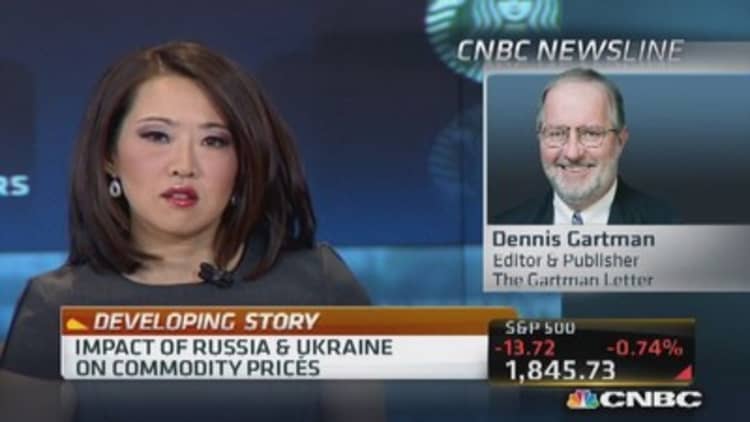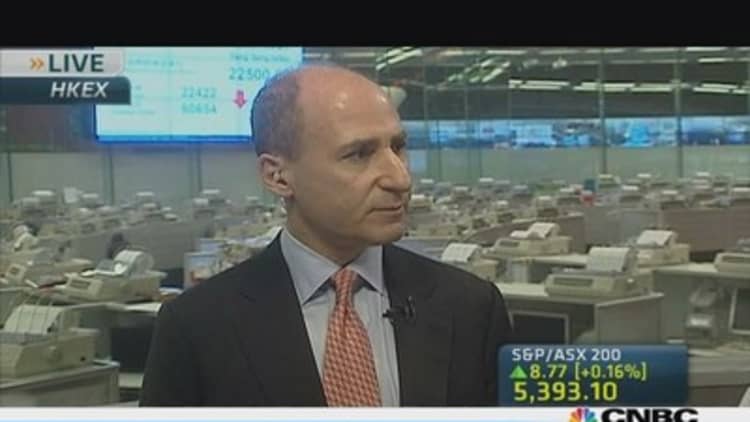The conflict in Ukraine has sent commodities markets into a tizzy, with the invasion of Ukrainian peninsula Crimea by Russia pushing up the prices of wheat and corn.
Wheat jumped nearly 5 percent Monday to a high of $6.44 a bushel, before slipping to around $6.24 in Asian trade Tuesday. Corn slipped 0.4 percent Tuesday to around $4.68 a bushel after rising to a high of $4.82 Monday, its highest since September.
(Read our live blog: Ukraine crisis: Latest news and market reaction)

"The importance of the Black Sea region to global grain markets should not be understated," said Luke Mathews, an agricultural commodities strategist at Commonwealth Bank of Australia, in a note. "Worries have continued to mount over the political situation in Ukraine and military positioning by Russia."
Mathews noted USDA data indicate Russia and Ukraine combined account for around 17 percent of the world trade in wheat, while Ukraine is expected to export around 16 percent of the world trade in corn.
(Read more: Is Ukraine panic giving shale a chance to shine?)
"Disruption of Ukrainian grain exports would have a material impact on global prices," Morgan Stanley said in a note. If the situation lingers, farmers' input costs, such as for fuel and fertilizer, may rise sharply, potentially leading to a decline in acreage planted, the bank said.
It also expected that the drop in the Ukrainian currency, the hryvnia, could lead farmers to hoard grains as a hedge against further depreciation. The U.S. dollar is fetching around 9.90 hryvnia, from around 8.90 on February 21, off the peak of around 11.00 touched on Thursday.
(Read more: Market panic over Ukraine is a 'short-term phenomenon')
The Ukrainian turmoil also comes as U.S., Australian and Argentinean wheat production may decline on factors including droughts and political uncertainty even as demand is increasing.
But will the commodity price increases take a bite out of your sandwich? The answer is probably "not yet."

The farm share, or the portion of retail prices that comes from raw agricultural commodities, comes to only about 8 percent of cereal and bakery product prices, according to a report late last year from the U.S. Congressional Research Service.
While the bar may be set high for wheat prices to move bread prices, it has happened before.
(Read more: Can Russia take the strain of Ukraine intervention?)
In 2010, when wheat prices were around $7.25 a bushel on CBOT, some food makers warned they would be passing on the rising wheat prices.
But perhaps more worrying for consumers, however, is that while what goes up must come down, it may not come down very much.
Over the 2006-09 period, the price of food grains rose nearly 129 percent from the start of 2006 to their peak, pushing up retail prices of cereals and bakery products by around 20 percent, but from the peak through the end of 2009, grain prices fell around 47 percent, but retail prices only edged down 1.3 percent, according to the Congressional Research Service report.
—By CNBC.Com's Leslie Shaffer; Follow her on Twitter @LeslieShaffer1

